Interactive Word Walls Enliven Vocab Learning
A MiddleWeb Blog
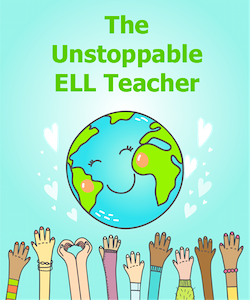 One might say that vocabulary is the currency of the classroom. And wouldn’t you agree that we want our kids to be RICH with vocabulary?
One might say that vocabulary is the currency of the classroom. And wouldn’t you agree that we want our kids to be RICH with vocabulary?
If kids don’t know lots of words, if they don’t understand the words, and if they can’t use the words, then those words are of no value to them.
Instead, they are deprived. Undernourished. The words we use with students must be accessible, valuable, and usable. Think of them as nutrients, vital to their learning muscles.
So how do we create classrooms that build and strengthen students’ vocabulary? Classrooms where student vocabulary is thriving?
One of best techniques I’ve come across in my years in education is the interactive word wall. You might recall the traditional type of word wall. You know, the teacher-created, alphabetic, random word wall. That is not what I’m referring to here.
The interactive word wall is very different. Here’s why.
Interactive word walls across the curriculum
I was first formally introduced to interactive word walls by Dr. Julie Jackson, an Associate Professor of Science Education at Texas State University, who has done research and implemented interactive word walls in many Texas schools.
Her discoveries about interactive word walls have been published in multiple journals. And she is amazing! Her work is primarily with science studies; however, her word-wall strategies can be applied in any content area.
An interactive word wall is basically a large graphic organizer displaying critical vocabulary on the wall. It is thematic or unit-based and includes pictures or graphics related to the words. The benefits of an interactive word wall are outstanding for all students, not just language learners!
Picturing words to boost retention
Since the interactive word wall is structured in the form of a graphic organizer, students are able to grasp and organize information easily. Words become related to one another and connections are built.
In a typical static word wall, the only organization is that the wall is in alphabetical order. Under each letter the teacher places random words that start with that particular letter. For example, under the letter A, words like airplane, ambulance, art, angel, always, anytime, etc. could be listed. These words have no relationship to one another. And only students who can already read the words truly have access to them.
An interactive word wall includes visuals, graphics, or realia (real objects) with each word. Students are able to connect words with their meanings very quickly. For language learners, the benefits are obvious! If the interactive word wall is about Energy and one the words on it is light bulb, a visual is the quickest way to demonstrate the meaning. Instantly a language learner identifies what that word means and sees the word daily inside the classroom environment.
Students do the work!
It has often been said that “those who do the work, do the learning.” Absolutely! That’s another reason why the interactive word wall benefits all students. Students are the ones doing the work.
The teacher creates the overall outline of the graphic organizer and the headings. Then while the teaching, learning, reading and exploring happen, students interact with the wall. They write the words that go in the categories and they add pictures for the words. If needed, the teacher is there to guide them.
Kids get so excited about seeing these walls come alive and grow as their own knowledge grows! I’ve seen kids bring words and pictures from home and put them on the wall. Essentially, they’ve given themselves homework, but it’s self-motivated!
During the process, the teacher can model how to use the word wall for listening, speaking, reading and writing. Here’s how:
T: reads the title Forms of Energy. “I can say this in a complete sentence. Listen and then repeat after me. There are many forms of energy.”
S: “There are many forms of energy.”
T: “Look at the headings. Heat, sound, and light. I can say this in a sentence too. Listen and repeat. Heat, sound and light are three forms of energy.”
S: repeat
T: “Now look under the heat column. Pick an example. Use this sentence frame to talk with your partner about heat energy. I claim that ______is a form of heat energy because….” (Sentence frame was posted on the wall for students to refer to as they spoke.)
S: Use the sentence frame to talk with their partner.

Setting the stage for writing
The interactive word wall provides students with the academic vocabulary that we want them to use when they are speaking and writing about the topic. The sentence frames provide the language structure.
When we put this vocabulary in their mouths before they write, they are more capable of developing higher quality writing. Imagine what the writing will look like if they have a chance to talk first and have the wall to refer to during writing.
When the wall is pretty much complete, we can teach students to use it to form a piece of writing. Just like we taught them to talk using complete sentence with each piece of the wall, now we model how to write that way.
Some students will need more scaffolding than others. Language learners at various levels will have different needs. Some will benefit from example writing pieces or mentor texts. Others will need paragraph frames to help with language structures and propel their writing.
Another technique to support writers is to chunk the writing. Start with modeling how to write the introduction. Then let them try. Always refer back to the interactive word wall. This is their word bank.
A method to include all students
This type of word wall is accessible to all students. That’s the beauty of it. It’s not just good for some of the kids. It’s not just valuable and readable to the kids who can already read in English or who are reading on grade level. Every student can access it because of the visuals, graphics, and realia.
Teachers ask what to do with the interactive word wall once the unit is over. I’ve come across many options, and you just have to figure out what works best for you. Some teachers layer their interactive word walls over one another. Some hang theirs on clothing hangers and on a rack, so students can access them if needed. Others take a picture of their wall and keep an album of all the interactive word walls in one spot for students to look at if needed.
As middle grade teachers we have to remember that word walls are not just for primary grades. In fact, as the vocabulary gets more difficult, word walls should become more sophisticated and used in every classroom all the way up to twelfth grade.
Adapting to messy, student-created walls
Interactive word walls are messy. But learning is messy too. They are student created. So don’t expect them to be cookie cutter and perfect. They won’t look like you spent all night preparing them. We have to get over that. Trust me, I used to be that teacher who prepared the entire word wall for the class. I did all the work. I did all the writing, cutting, and putting the words up. I learned a lot. I also learned that the kids needed to be doing the work.
Now, you may be that teacher who is saying to yourself, “But I love my traditional word wall. I’ve done it for years and I think it works for my kids.” I know. Change is difficult. I used to think the same thing about my beautiful word wall UNTIL I witnessed the power of the interactive word wall.
Realizing that my traditional word wall was not emphasizing and connecting the vocabulary from the state standards that my students really needed was a big eye opener too. My students needed higher levels of academic vocabulary in order to make adequate progress in reading and writing. The old word wall just wasn’t cutting it.
Our classroom walls are massively valuable to us. We know that what we put on them needs to be important. Being selective is key. Interactive word walls definitely give you the biggest bang for your buck!
Resources I recommend for learning more about interactive word walls:
Step by Step video on How to Create an Interactive Word Wall (Julie Jackson)
The Science Toolkit has sample walls you can click
The Science Toolkit Facebook Page
The Best Ideas on How to Use Classroom Walls by Larry Ferlazzo
Also see Tan Huynh’s 2020 article:
How to Teach Content Vocabulary to Our ELs
Image credit: The photos above are from 6th Grade classrooms. Used with permission from Dr. Julie Jackson.

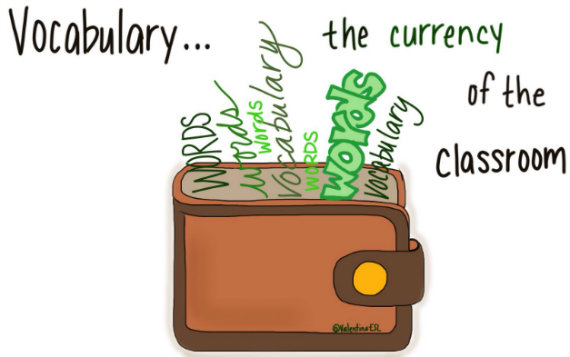
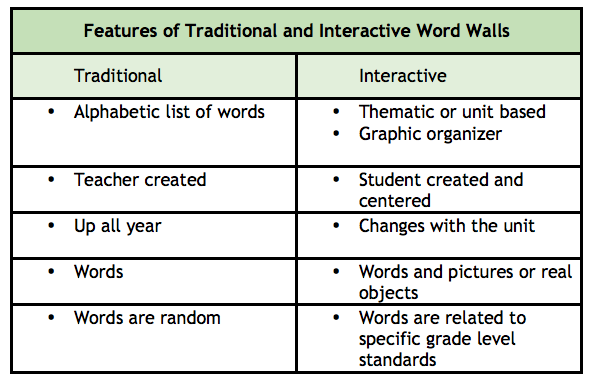
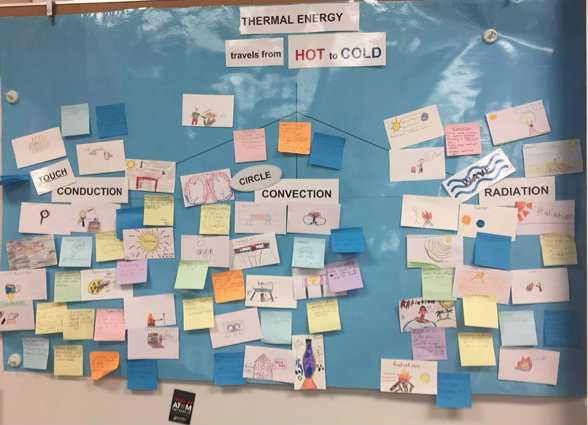
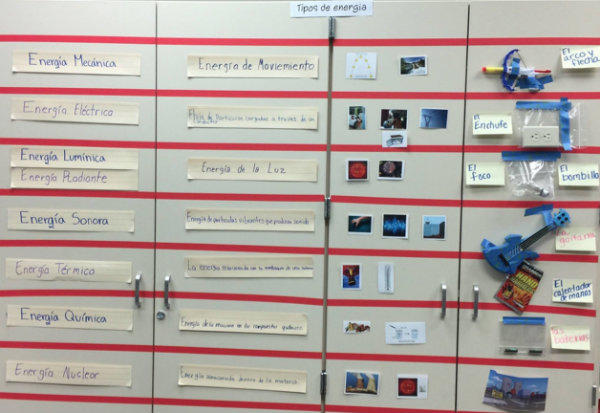
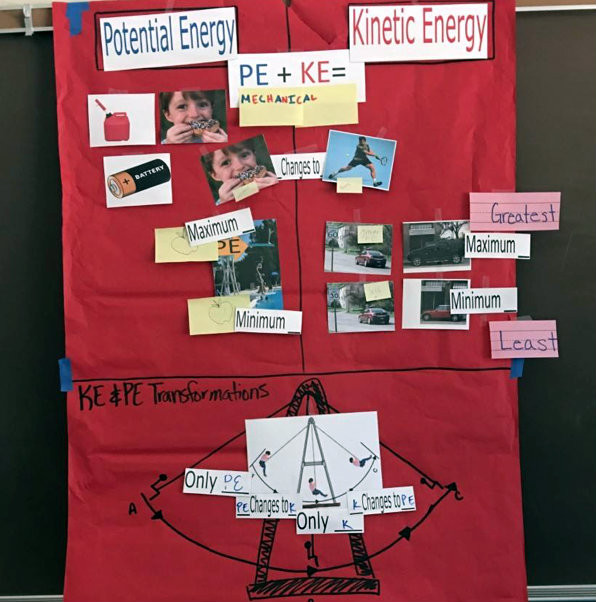





























I LOVE the pictures, Valentina! This is a really informative post!
Rita, thank you so much! IWW have truly made a difference for students in classrooms throughout my district! I’m hooked and I can’t stop sharing!
I love this! Thanks for sharing!
The only thing I would add is that traditional word walls have a different purpose. Patricia Cunningham pioneered work on word walls. Each word is not randomly added: each word should be strategically selected because it represents a spelling pattern that can help kids spell novel words. Words are added across the year as new spelling patterns are taught. Interactive word wall activities teach kids how to apply the word wall to problem solve spelling. I agree, many teachers do not use traditional word walls the way they are meant to be used, but they are not intended to be a vocabulary tool. They are intended as an essential element of spelling instruction. I love the theory of interactive word walls to support vocabulary development, but it’s not an either-or. Too few teachers understand good spelling instruction and that is why so many word walls seem random.
Thank you for your valuable input, Erin!
Great read. I think it would be great too to have the interactive word walls in the hallways so that students can see them grow as they pass by them each day.
Hi Terry,
Thank you for reading. Yes, putting them out in halls is another way to display them. I have seen this on a few campuses that I’ve visited. The kids and teachers like it very much.
Hello,
I am an Education Mentor for Preschool Educators and I would like more feedback on; How these word walls work in the preschool setting?
Hi Melissa,
I apologize for missing this comment until today. In preschool settings, interactive word walls fit right in with units of study. For instance, when classes learn about families or farm animals, the IWW showcases the images WITH words. Students draw images too and as the class learns about, let’s say “farm animals” the teacher points to the images and reads. Students echo read. Eyes on print and visuals to support vocabulary. Students track and repeat.
Which creative word wall activities can I do with foundation phase learners to improve vocabulary?
Hi Buyisile,
The activities that you do with foundation phase learners would be dependent on developmental appropriateness and grade-level skill or concept being taught. I love that interactive word walls are flexible to the needs of learners.
I really like the Interactive Word Wall lessons!